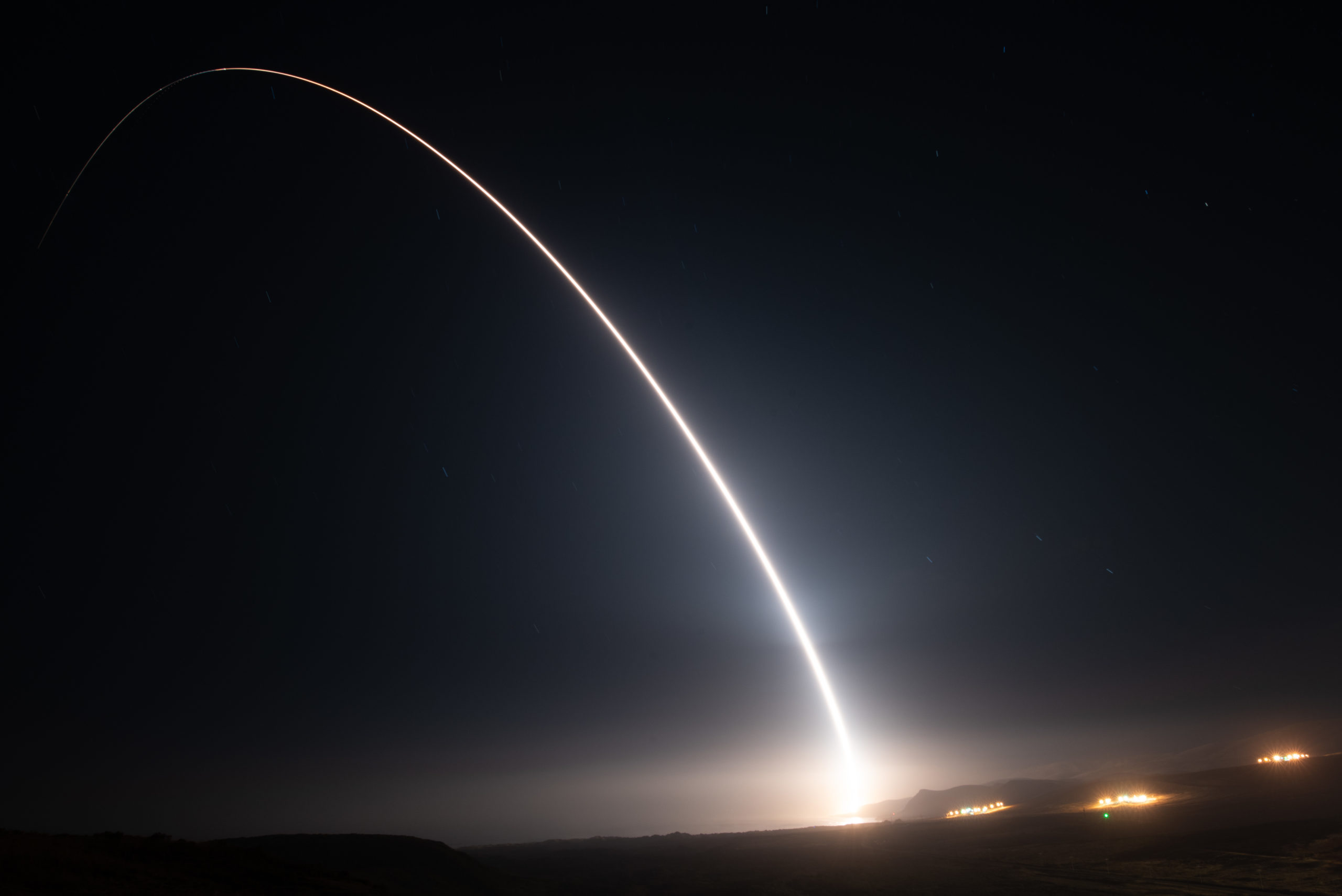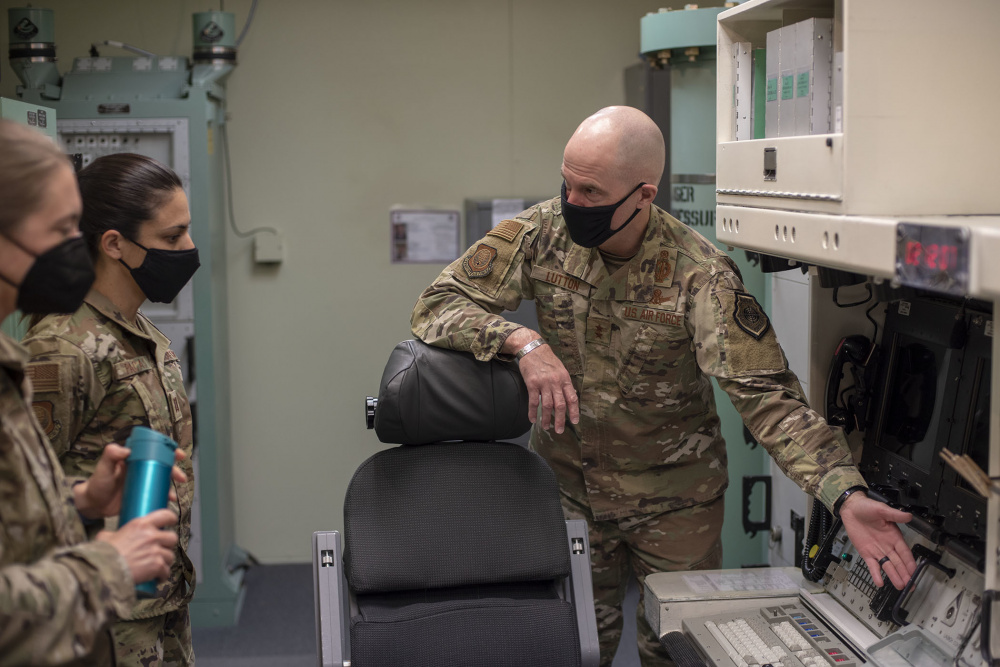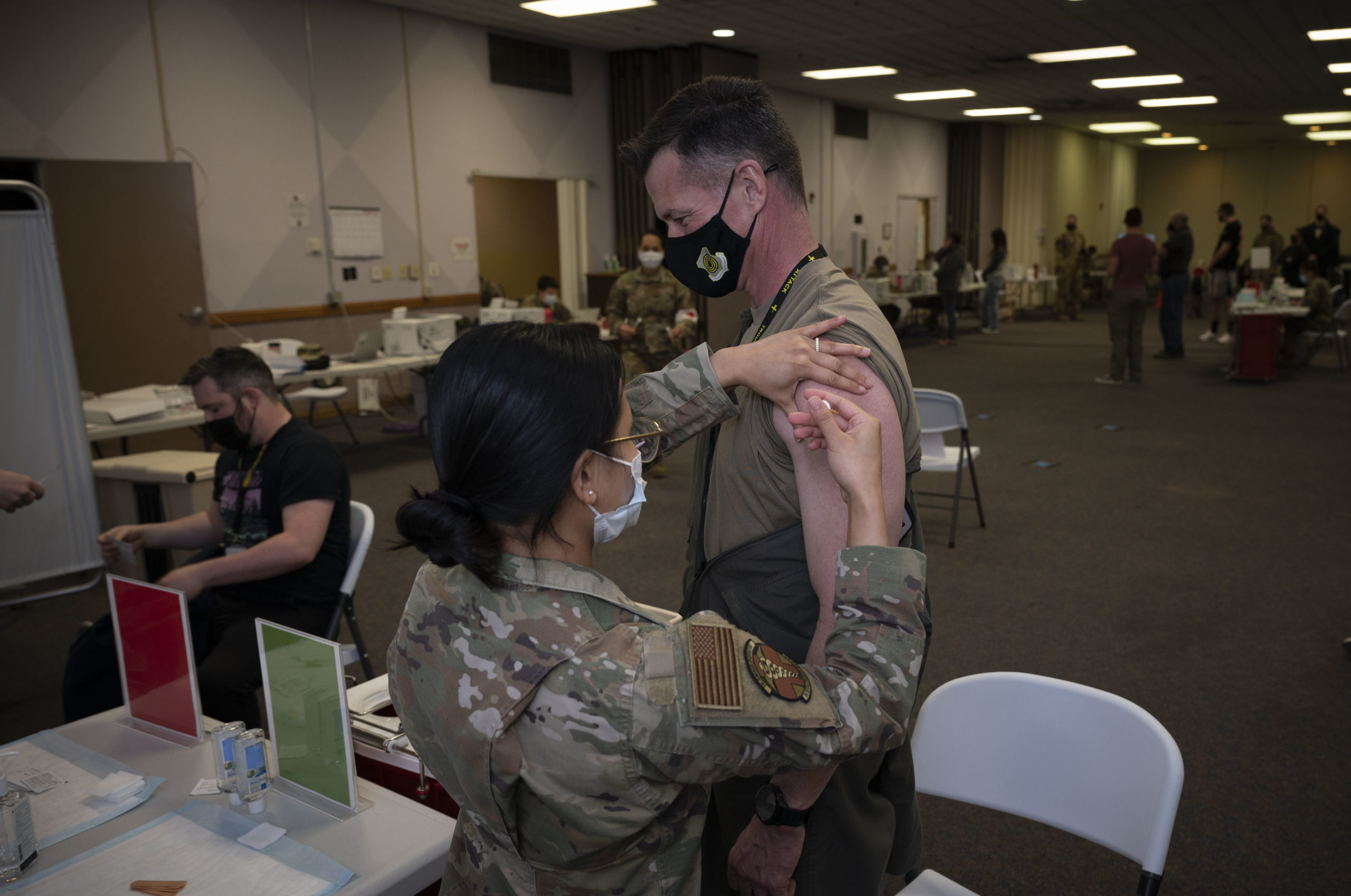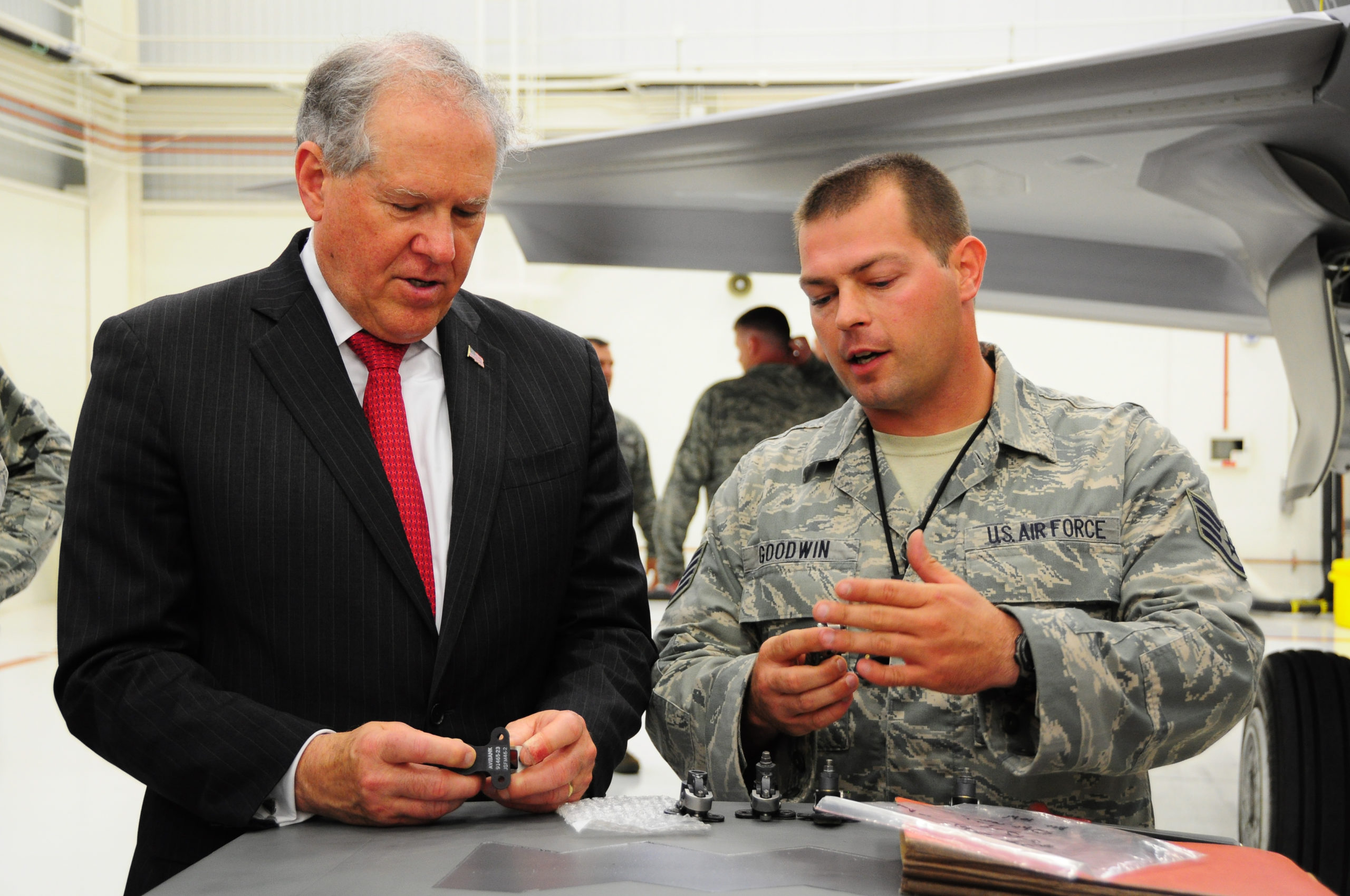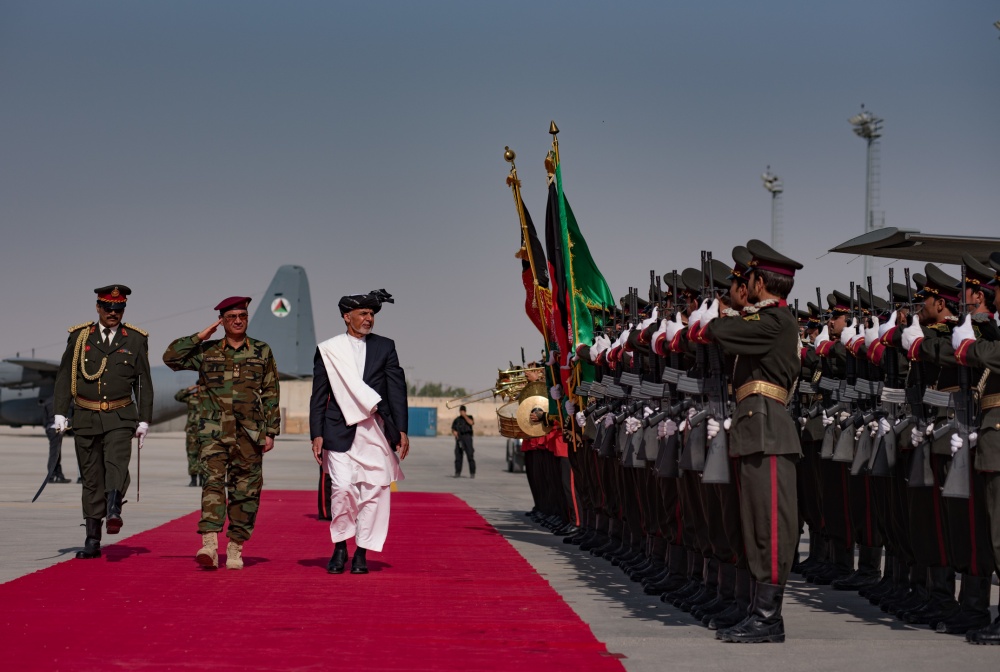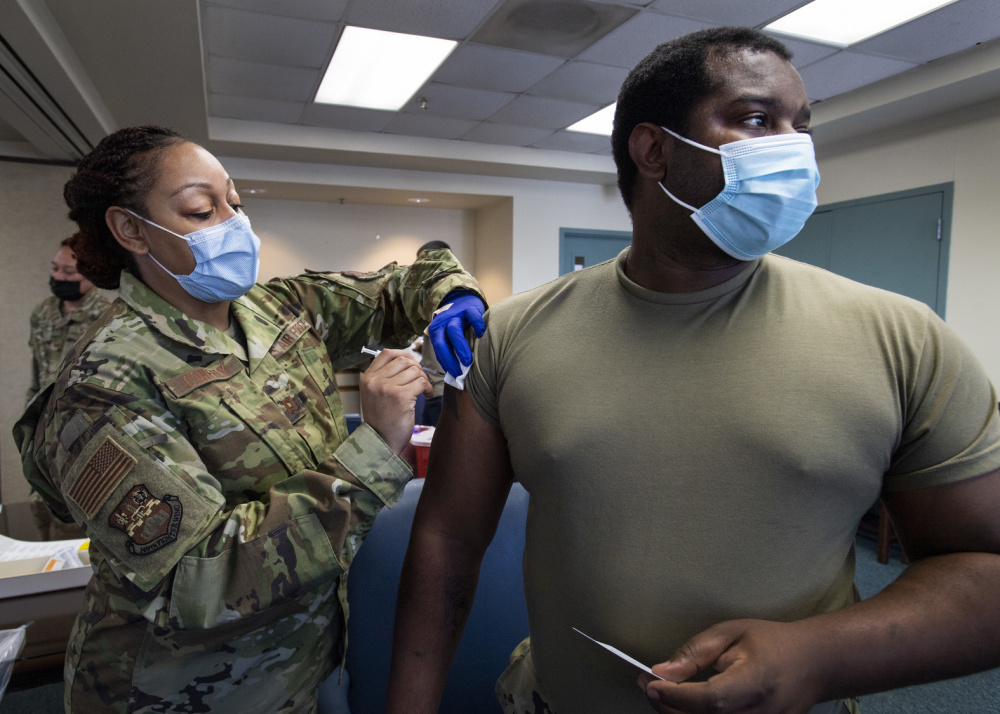Air Force Global Strike Command launched an unarmed intercontinental ballistic missile from Vandenberg Space Force Base, Calif., in the early morning hours of Aug. 11, sending the ICBM some 4,200 miles before detonating it with non-nuclear explosives near the Marshall Islands in the Pacific.
Airmen from the 341st Missile Wing at Malmstrom Air Force Base, Mont.; 90th Missile Wing at F.E. Warren Air Force Base, Wyo.; and 91st Missile Wing at Minot Air Force Base, N.D.; all contributed to the successful launch, which involved a Minuteman III missile and a Hi Fidelity Joint Test Assembly re-entry vehicle that detonated conventional explosives above the surface of the water near Kwajalein Atoll.
“The U.S. nuclear enterprise is the cornerstone of the security structure of the free world,” Col. Omar Colbert, 576th Flight Test Squadron commander, said in a statement. “Today’s test launch is just one example of how our nation’s ICBM fleet demonstrates operational readiness and reliability of the weapon system. It also allows us to showcase the amazing level of competence and capability of our Airmen.”
The test launch was not in response to “global events or regional tensions,” Lt. Col. Aaron Boudreau, Task Force commander, said in a statement. Launch calendars are made five years in advance, with planning for each particular launch taking six months to a year, he said.
Still, the test in the Pacific comes at a time when Air Force and Defense Department leadership have increasingly emphasized the threat posed by competition with China, especially in the Indo-Pacific region.
Within the past few weeks, search groups studying satellite imagery of a desert in western China have spotted more than 100 new silos for ICBMs, news outlets have reported, as the Chinese seemingly bolster their nuclear arsenal.
In response, Air Force leaders have emphasized the need for the U.S. to modernize its own nuclear missiles.
“I believe modernization is a critical part of that, right? Modernization is a critical part of counter-proliferation,” 20th Air Force Commander Maj. Gen. Michael J. Lutton said during a virtual Mitchell Institute for Aerospace Studies event Aug. 10. “And modernization is a critical part of nuclear nonproliferation. It is beneficial to work with the Chinese. We’ll see if the Chinese want to work with us.”
Minuteman III missiles, like the one used in the Aug. 11 test, were first deployed in 1970 and are expected to remain in use into the 2030s, with Air Force leaders saying they are committed to ensuring the aging system remains an effective deterrent while simultaneously advocating for its replacement, the Ground-Based Strategic Deterrent.
GBSD, however, has faced some criticism in Congress over its cost, and President Joe Biden’s administration is conducting a Nuclear Posture Review that will outline its view of the future of America’s nuclear triad.
